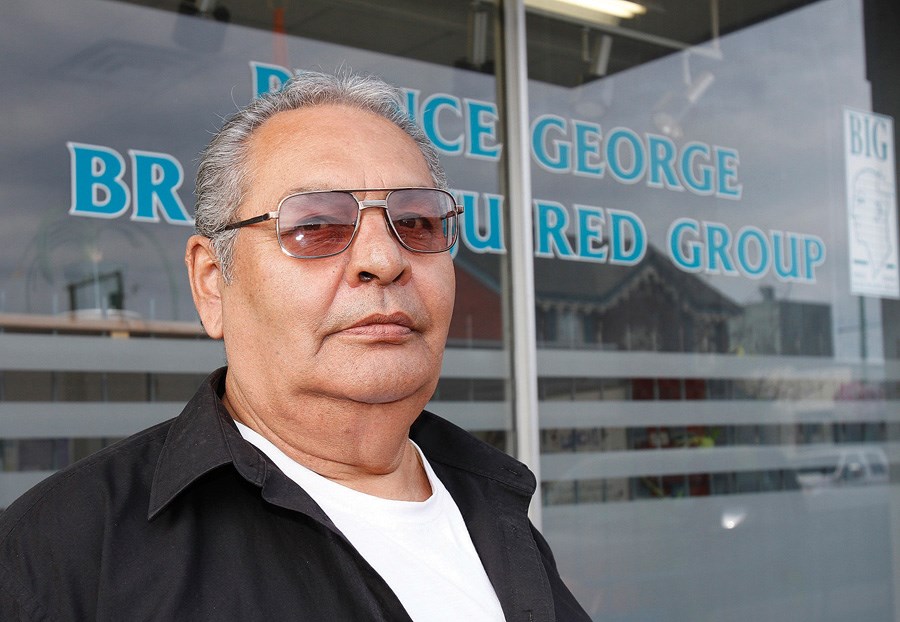Bruce Collins believes the brain injury he suffered 16 years ago may have saved his life.
A self-described drug addict and alcoholic, Collins has been clean and sober since the aftermath of a brain aneurism he endured on Jan. 3, 1997.
"I probably never would have changed if it wasn't for the brain aneurism I suffered," he said. "I blame [the aneurism] on drinking and drugging, I don't see any other way it could have happened."
A former bareback rodeo rider, Collins lived a tough life. He remembers drinking and doing drugs 24 hours a day for weeks at a time, often with little or no sleep. His addictions not only ravaged his body, they alienated him from his family.
"Every time the liquor would start to overtake me, I'd have another shot of heroin or [cocaine] and it would override the booze and I'd be able to drink some more," Collins said.
Studies have shown First Nations people like Collins are much more likely to suffer acquired brain injuries than the rest of the population and in many cases are unable to access the same level of service for treatment often because they live in remote locations.
The injuries not only have a lasting effect on the individual who gets hurt, but also their family and loved ones as well.
University of Toronto professor Michelle Keightley co-authored a report that showed that substance abuse, past suicide attempts and higher rates of events that can cause traumatic brain injuries like assaults, car crashes and falls are the key reasons why the rate of acquired brain injury is so much higher among First Nations people.
The report said effective prevention measures are lacking and treatment can often be challenging.
"Clients from reserves and remote communities who migrate to cities to obtain health services confront substantial social and cultural adjustments, particularly among youth and brain injury clients who may be prone to compromised decision-making skills," the report, titled Community-based Approach to Exploring Brain Injury from an Aboriginal Perspective, said.
Collins said he believes in addition to living in remote communities, First Nations culture plays a role in the lack of access to treatment for those with brain injuries.
"There are probably more brain injured aboriginal people sitting at home, doing nothing, because of the way we are with our injured people," he said. "I don't know if it's the way the old people are, the grandmas, they want to take care of everyone."
Harry Good, a First Nations man who suffered a brain injury when he was attacked at a bar, said alcohol plays a major role in many cases of brain injury among his peers.
"The only reason I can think is the alcohol involved in some of the communities because there's a lot of drinking," Good said, noting that often leads to fights and accidents.
Northern Brain Injury Association remote case manager Will Lewis has visited some local First Nations communities to raise awareness about brain injuries and what can be done to prevent them. He said the talks have been successful and he'd like to bring his presentation to more reserves across the north, but funding for that type of programing is hard to come by.
"The people at highest risk are the people that aren't getting that message," Lewis said.
Collins is living that message everyday. Although he knows his life is better now that he has sworn off drinking and drugs, it's still far from being perfect.
He can no longer walk as well as he used to and he can't lift anything heavy any more. Like many brain injury survivors, he has a hard time concentrating on things and gets tired quickly - even watching a half-hour television program can be draining.
He also has anger issues that can come on quickly and he doesn't handle big crowds very well.
"After a brain injury, your feelings get more intense," he said. "You cry more easily; you're more happy when you're happy; when you're sad, you're totally sad; and when you're angry, you're totally angry."
Collins is a regular at the Prince George Brain Injured Group (PGBIG) office on 4th Avenue. He sees it as a safe place where he can go and interact with people who understand what he's gone through.
Like many PGBIG clients, Collins also volunteers in the community. Every Sunday he goes back to Jubilee Lodge, a place he called home for eight months, and helps the residents attend church services.
It was when he was a resident at the lodge in the months after his anuerism that Collins committed to stop drinking and to stay away from drugs. He was on his way to a wine and cheese for residents of the facility when he stopped his wheelchair in the hallway and realized in order to make his recovery as full as possible he needed to stop drinking completely.
"I owe them a big part of my life," Collins said.
Alcoholics Anonymous and addictions counsellors have helped Collins along the way, but he also credits the PGBIG staff with helping him stay sober. Every five years he brings a cake to the PGBIG office to celebrate his sobriety, something he did again earlier this month to mark 15 years being alcohol and drug free.
"I'm not saying I'm glad I had an aneurism, but I wouldn't have the life I have right now if I wouldn't have had it," Collins said. "I'm pretty satisfied with my life right now."



